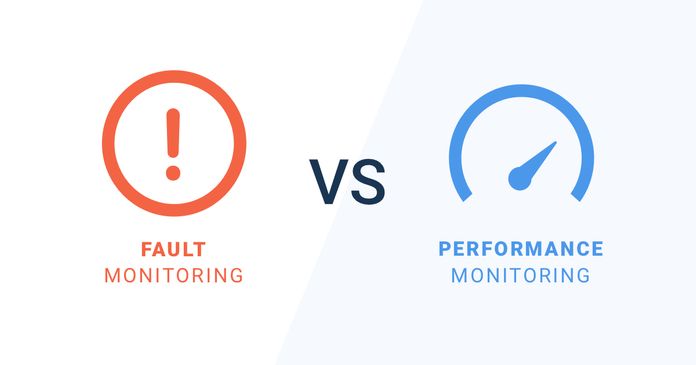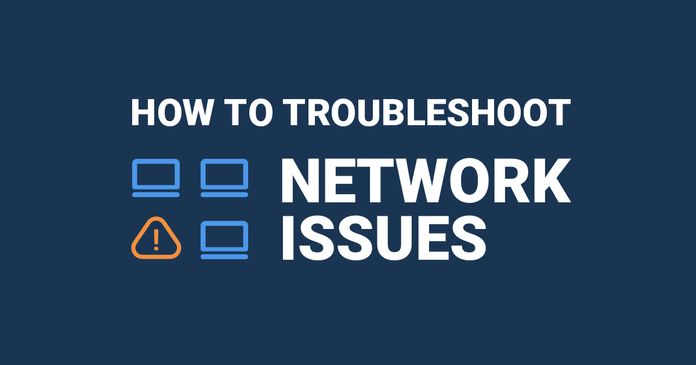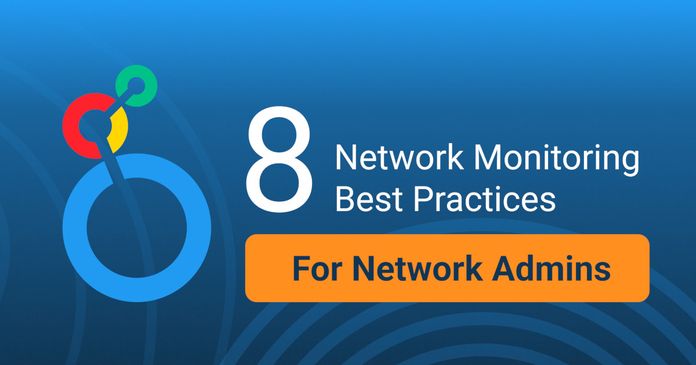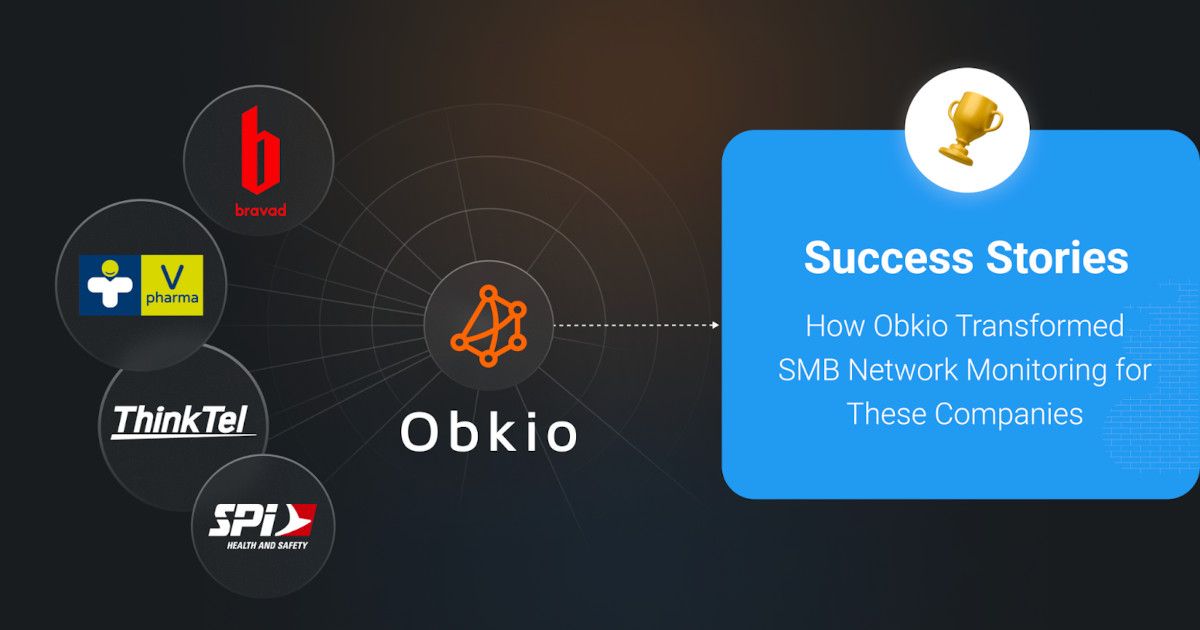Table of Contents
Table of Contents
Welcome, professionals! Join us on a transformative journey into "Network Diagnostics." In this blog post, we equip you with the expertise to optimize your network's performance and enhance your business operations. From identifying to troubleshooting network issues, we provide insights and strategies to swiftly resolve connectivity bottlenecks.
Picture this: You're in a crucial video conference when your connection falters, potentially affecting your business outcomes. We understand the impact of network performance on your organization. That's why we empower you to become a network sleuth, capable of identifying and resolving performance mysteries. With practical tips tailored to your needs, we help you make informed decisions to boost productivity, user experience, and your bottom line.
Network diagnostics refers to the process of identifying, analyzing, and resolving issues related to computer networks. It involves examining the performance, connectivity, and reliability of network systems to diagnose and troubleshoot problems that may impact their functionality.
Network diagnostics encompass a range of techniques and tools used to investigate and resolve network issues. These may include:
- Network monitoring: Continuous monitoring of network devices, traffic, and performance parameters to detect anomalies, bottlenecks, or other issues.
- Packet analysis: Examining individual data packets flowing through the network to identify errors, latency, packet loss, or other abnormalities that could affect network performance.
- Connectivity testing: Verifying network connectivity between devices or systems to ensure smooth data transmission and identify potential connectivity problems.
- Performance measurement: Assessing network performance metrics such as bandwidth utilization, latency, and throughput to identify areas for improvement and optimization.
- Error code interpretation: Analyzing error messages or codes generated by network devices, protocols, or applications to determine the underlying causes of network issues.
- Troubleshooting protocols: Following standardized procedures and protocols to systematically identify and resolve network problems, often involving step-by-step analysis and network testing.
By employing network diagnostics, IT professionals can identify and resolve network issues efficiently, ensuring optimal network performance, network stability, and reliability. This process plays a crucial role in maintaining a healthy and efficient network infrastructure, enabling smooth communication, data transfer, and overall operational success.
Ready to unleash the power of network diagnostics with a touch of fun? Say hello to Obkio, your trusty sidekick in the quest for network excellence! Don't let network mysteries baffle you any longer – Obkio is here to save the day!
With Obkio's supercharged network monitoring abilities, you'll be equipped with the ultimate diagnostic toolkit. Unleash your inner network detective and uncover the hidden secrets of your network's performance with Obkio's Free Trial!

- 14-day free trial of all premium features
- Deploy in just 10 minutes
- Monitor performance in all key network locations
- Measure real-time network metrics
- Identify and troubleshoot live network problems

Nowadays, networks are more and more complex than ever. Users work from everywhere, the applications they consume are distributed in the cloud, and the network flows between users and applications are increasingly numerous and decentralized.
Intermittent network issues can come from anywhere, and can cause choppy VoIP Quality, jerky video calls, and network and application slowness issues. These issues can affect your business in drastic ways and make the network diagnostic process (identifying and troubleshooting these issues), more difficult.
From working with telcos in the past, the founders of Obkio’s Network Monitoring tool noticed a lot of finger-pointing between clients, teclos, and Service Providers (SaaS applications, VoIP, UC) when problems arose.
No one could truly identify where network problems were coming from, and who was responsible for fixing them. That’s because the traditional monitoring tools they were using were no longer working for their modern networks.
Network diagnostics are crucial for businesses for several reasons:
- Efficient Operations: A reliable and high-performing network is essential for smooth business operations. Network diagnostics help identify and address issues that can disrupt connectivity, slow down data transfer, or cause downtime. By resolving these problems promptly, businesses can maintain optimal network performance, enhance productivity, and minimize disruptions to critical processes.
- Improved User Experience: Businesses rely on network connectivity for various tasks, such as accessing cloud applications, collaborating with remote teams, and communicating with clients. Network diagnostics help ensure a seamless user experience by identifying and resolving issues that may impact connectivity, latency, or data transfer speeds. This leads to increased satisfaction among employees, customers, and partners who rely on the network for their daily activities.
- Cost Savings: Network issues can have financial implications for businesses. Unresolved connectivity problems may result in wasted time, decreased productivity, or missed opportunities. Network diagnostics enable businesses to proactively identify and address performance issues, avoiding costly downtime or the need for emergency troubleshooting. By optimizing network performance, businesses can make the most of their existing infrastructure and potentially avoid unnecessary hardware upgrades or network expansions.
- Security Enhancement: Network diagnostics can also play a role in enhancing cybersecurity. By monitoring network traffic and analyzing anomalies, businesses can detect potential security breaches or unauthorized access attempts. Timely identification of network vulnerabilities allows for prompt action, such as applying patches, updating security protocols, or implementing additional security measures to protect sensitive data and safeguard the network from potential threats.
- Scalability and Future Planning: As businesses grow, their network requirements evolve. Network diagnostics provide valuable insights into the current network infrastructure, including performance bottlenecks, bandwidth utilization, and capacity limitations. This information enables businesses to plan for future scalability, identify areas that may need upgrades or improvements, and allocate resources effectively to meet expanding network demands.
Most traditional monitoring tools only really focused on the state of network devices (like firewalls, switches, and routers) and not truly on the performance of the network.
Therefore, they weren’t really designed to identify intermittent network problems. They only let you know if your network device was up or down (if there's a network outage).
Additionally, traditional network tools were generally centralized, and therefore aren’t able to monitordecentralized network infrastructures, which are now larger and more distributed than ever before.
Worst of all, traditional monitoring tools are very complex and difficult to use and most network admins just don’t have the expertise to use these tools. Not to mention that those that are qualified in networks are usually specialized in LANs but not WANs.
IT Pros are used to Network Fault Monitoring but what about Network Performance Monitoring? What's the difference?
Learn more

When it comes to network diagnostics, there are many different techniques you can use - but one solution stands out as both the easiest to implement and the most comprehensive: network monitoring.
By utilizing network monitoring tools, businesses gain an unparalleled advantage in understanding and optimizing their network performance. With real-time visibility network monitoring simplifies the diagnostic process and empowers IT teams to swiftly identify and resolve network issues. It is the go-to solution for businesses seeking an efficient and holistic approach to network diagnostics.
- Real-time Visibility: Network monitoring tools provide real-time visibility into the performance and status of network devices, applications, and traffic. They continuously monitor key metrics such as bandwidth utilization, latency, packet loss, and device health, allowing IT teams to quickly identify and diagnose network issues as they arise. Real-time visibility enables proactive troubleshooting, minimizing downtime and reducing the impact on business operations.
- Efficient Troubleshooting: Network monitoring tools offer comprehensive data and analytics that help streamline the troubleshooting process. By visualizing network performance metrics and trends, these tools assist IT teams in pinpointing the root cause of problems. They provide detailed insights into traffic patterns, device behavior, and performance anomalies, facilitating efficient diagnostics and reducing the time spent on manual investigation.
- Alerting and Notifications: Network monitoring tools can be configured to send network monitoring alerts and notifications when predefined thresholds or anomalies are detected. These notifications enable IT teams to proactively respond to potential network issues, even before they impact users or business processes. By receiving timely alerts, IT personnel can address problems promptly and minimize the impact on network performance and end-user experience.
- Historical Analysis: Network monitoring tools often include data retention capabilities, allowing IT teams to access historical network performance data. This historical analysis is valuable for identifying recurring issues, understanding long-term trends, and performing root cause analysis. By examining historical data, IT teams can identify patterns, make informed decisions for network optimization, and implement preventive measures to mitigate future issues.
- Capacity Planning and Optimization: Network monitoring tools provide insights into network utilization and traffic patterns, assisting with capacity planning and optimization. By analyzing bandwidth usage and identifying peak traffic periods, IT teams can allocate resources effectively, anticipate capacity requirements, and optimize network infrastructure to meet the evolving needs of the business.
Obkio’s Network Performance Monitoring software was born from a need within the industry to simplify network performance monitoring for modern, decentralized networks.
Obkio was designed to monitor all network types (SD-WAN, MPLS, Dual-WAN, LAN, WAN L@ et L3 VPN, SASE architectures) from one end of the network to the other (from WAN to LAN).
When monitoring network performance, Obkio always monitors performance between two points (branch, data center), using synthetic traffic (no packet capture required) and Monitoring Agents.
When performing a network diagnostic, this allows you to continuously monitor network performance from the end-user perspective to identify live network issues as soon as they happen. Here’s how!
Join the legion of tech-savvy professionals who have embraced Obkio and experience the magic of hassle-free network diagnostics. It's time to say goodbye to the guessing game and hello to network superhero status. Don't wait – let Obkio be your guide to network greatness today!
- 14-day free trial of all premium features
- Deploy in just 10 minutes
- Monitor performance in all key network locations
- Measure real-time network metrics
- Identify and troubleshoot live network problems
Ready to embark on an epic network diagnostics adventure?

To begin your network diagnostic process, you need to identify live network issues happening anywhere in your network. This means that you need to monitor your whole network, from end-to-end. This includes your head offices, remote branches, data centers, SaaS applications over the Internet, as well as on-premise servers and applications.
That's where Obkio's Network Monitoring Agents come in handy! These trusty agents are strategically placed at key network locations and constantly exchange synthetic traffic (every 500ms) to monitor performance and sniff out any pesky network issues.
Here's the setup we recommend to monitor all network locations:
- Local Agents: Installed in the targeted office location experiencing network connectivity issues. There are several Agent types available (all with the same features), and they can be installed on MacOS, Windows, Linux and more.
- Public Monitoring Agent: These are deployed over the Internet and managed by Obkio. They compare performance up to the Internet and quickly identify if the network connectivity issue is global or specific to the destination. This will be great information for later in the troubleshooting process. You can use an AWS or Google Cloud Agent.
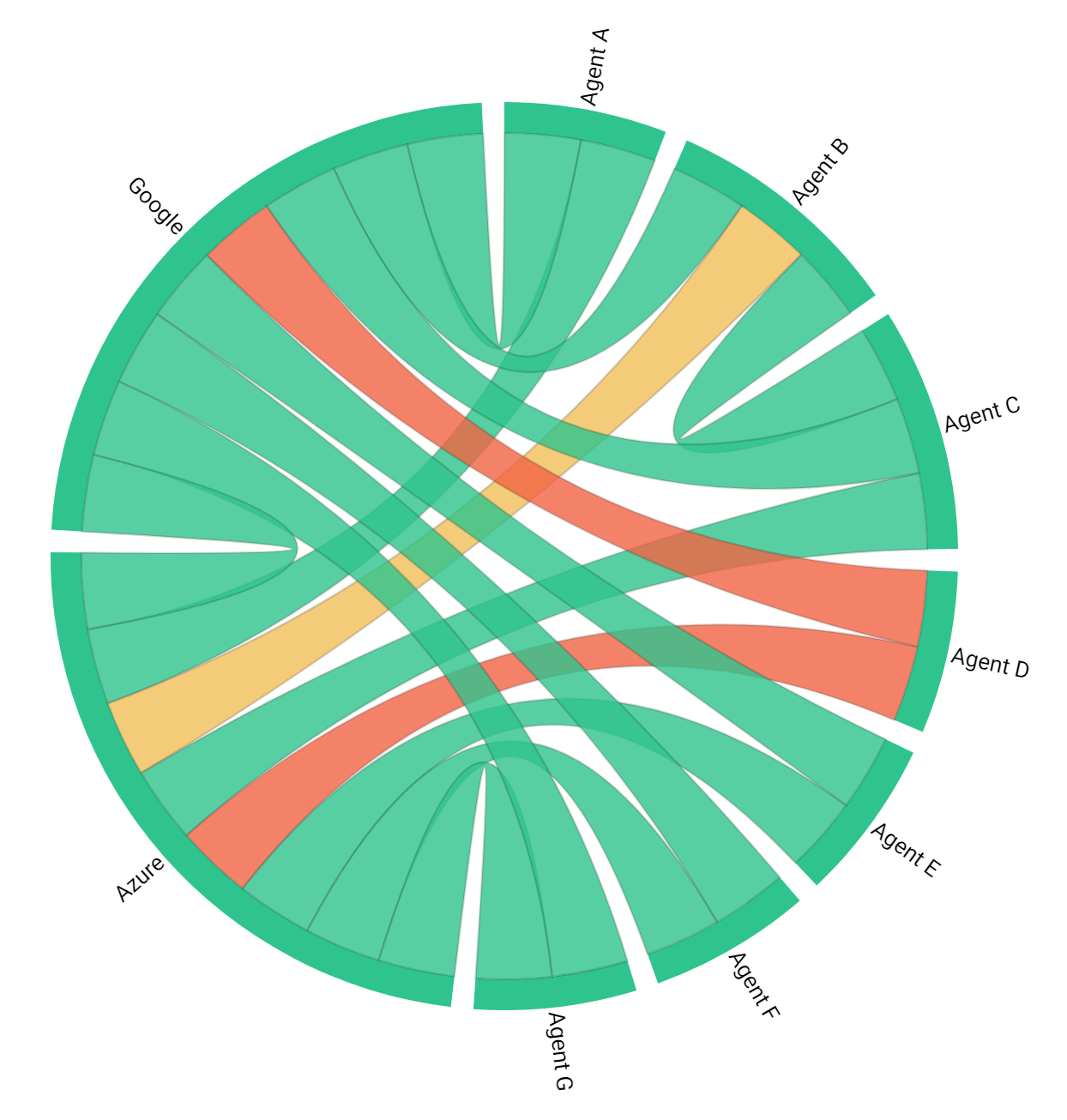
Traditional troubleshooting solutions relied on manually running pings and traceroutes to diagnose network problems. This was usually done every 5 minutes and in ICMP, which had a lot of limitations.
Obkio monitors network performance using Network Monitoring Agents and Monitoring Sessions which monitor network flows in all network locations.
Obkio’s Monitoring Agents exchange UDP traffic every 500ms for continuous performance monitoring and even offers advanced traceroutes (like Obkio Vision) which run between every hop to every destination.
This allows you to identify a live network issue before it actually even happens.
Once your Network Monitoring Agents are installed, they’ll start exchanging synthetic traffic to measure key network metrics in all network locations.
Monitoring network metrics is essential for effective network diagnostics. It allows for performance evaluation, issue identification, proactive problem detection, trend analysis, capacity planning, and performance optimization. By leveraging network metrics, IT teams gain valuable insights to maintain a healthy and high-performing network infrastructure, ensuring smooth operations and superior user experience.
When it comes to network diagnostics, several key network metrics should be measured to gain a comprehensive understanding of network performance. These metrics include:
- Bandwidth Utilization: Bandwidth utilization measures the percentage of available network capacity being used. It helps identify if the network is experiencing congestion or if specific devices or applications are consuming excessive bandwidth.
- Latency: Latency refers to the delay it takes for data packets to travel from source to destination. Monitoring latency metrics helps identify delays in data transmission, which can impact real-time applications such as video conferencing or online gaming.
- Packet Loss: Packet Loss measures the percentage of data packets that are lost during transmission. High packet loss can indicate network congestion, hardware issues, or inefficient network configurations that need to be addressed.
- Network Jitter: Jitter refers to the variation in latency or delay between data packets. Excessive jitter can lead to inconsistent and unreliable data transmission, affecting applications that require stable and consistent network performance.
- Network Availability: Network Availability measures the uptime and accessibility of the network. Tracking availability metrics helps identify periods of network downtime or disruptions, enabling prompt troubleshooting and minimizing the impact on business operations.
- Throughput: Network Throughput measures the amount of data that can be transmitted over the network within a given time period. Monitoring throughput metrics helps determine the network's capacity and efficiency in handling data traffic.
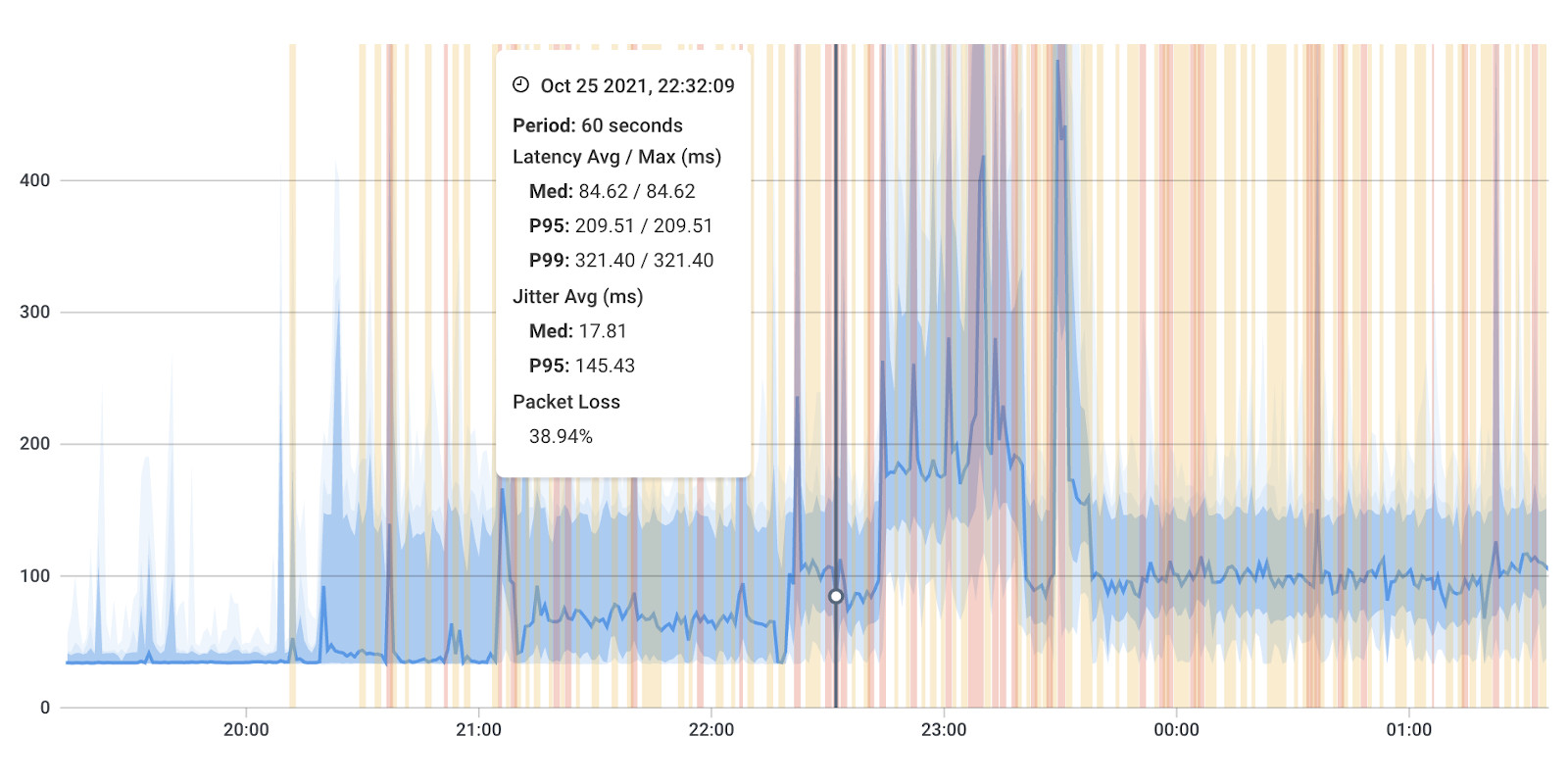
These are just some of the essential network metrics to consider for network diagnostics. The specific metrics measured may vary depending on the network environment, business requirements, and the tools used for monitoring. It is important to select and monitor metrics that align with the goals of optimizing network performance, ensuring reliable connectivity, and meeting the needs of the organization.
Monitoring device health metrics, such as CPU utilization, memory usage, and error rates, provides insights into the operational status of network devices. Deviations or abnormalities in device health metrics can indicate hardware issues or configuration problems that require attention.
Obkio’s Network Device Monitoring feature is a fast and easy solution to get detailed information about the performance of your core network devices such as routers, switches, firewalls, and more, to quickly and proactively pinpoint and troubleshoot network device issues like congestion, high CPU and interface errors.
Here are some important network device metrics to consider:
- CPU Utilization: CPU usage measures the percentage of processing power being utilized by a network device. High CPU utilization can indicate performance bottlenecks, inadequate processing capacity, or excessive network traffic, which may impact device performance and network functionality.
- Memory Usage: Monitoring memory usage helps determine the amount of memory being utilized by a network device. Excessive memory usage can lead to device slowdowns, instability, or even crashes. By tracking memory metrics, IT teams can identify memory leaks, inefficient resource allocation, or the need for memory upgrades.
- Interface Errors: Interface errors refer to the number of errors or collisions occurring on network interfaces. These errors can include frame errors, input/output errors, or CRC (Cyclic Redundancy Check) errors. Monitoring interface errors helps identify potential issues with connectivity, cable quality, or network configuration that may impact data transmission reliability.
- Device Uptime: Device uptime measures the amount of time a network device has been continuously operational without experiencing any downtime. Tracking device uptime helps identify potential issues, maintenance requirements, or the need for device replacements.
- Device Configuration Changes: Monitoring device configuration changes helps track any modifications made to network device settings. Keeping a log of configuration changes aids in troubleshooting, identifying unauthorized changes, or understanding the impact of configuration modifications on network behavior.
Once you have implemented your Network Monitoring and network diagnostics setup, it is crucial to identify when network issues occurred. Traditional monitoring tools often rely on analyzing pings or continuous monitoring data to detect deviations from the usual pattern. While this approach can be effective, it may not provide real-time visibility into changes in network performance or allow for precise identification of network issues.
With Obkio, the network monitoring solution of choice, you can take your diagnostics to the next level. Obkio enables you to analyze your network monitoring session in real-time, allowing you to observe any changes in your network performance baseline at a specific moment in time. This real-time analysis empowers you to swiftly identify and address network issues as they happen, minimizing their impact on your business operations and user experience.
But the benefits of Obkio don't stop there. With its advanced capabilities, you can even pin your time-range and dive into historical data to investigate network problems that occurred in the past. By accessing historical data, you can review network performance metrics, traffic patterns, and device behavior during the identified time frame. This functionality is invaluable for performing root cause analysis, identifying recurring issues, and implementing preventive measures to avoid similar problems in the future.
Learn how to troubleshoot network issues by identifying where, what, why network problems occur with Network Troubleshooting tools.
Learn more

Next in the network diagnostic process, you need to identify where on the network path did the network problem occur.
With traditional monitoring tools you would identify this by comparing Traceroutes, probably using notepad++.
With Obkio, you can easily pinpoint and identify where network problems occurred using Obkio Vision, advanced Traceroute feature. Obkio Vision’s Network Map shows a visual representation of each network path to their destinations to help pinpoint where network issues are located.


Next is the moment you’ve all been waiting for: how to troubleshoot the live network issues. First, we’ll start with WAN problems, seeing as most network admins are not specialized in WAN problems.
Using traditional monitoring tools, you would generally open a support ticket with your ISP and share the results of pings and traceroutes.
This would generally start an endless ping-pong game with your ISP because it was difficult to get data from both network directions, and therefore difficult to really pinpoint where the problem is.
With Obkio, you can easily share live traceroute results (for live network issues) with your ISP using a public link.
This way, your ISP’s network engineers can see the network issue, change the traceroute options and validate that their changes are fixing the issue - without having to communicate with you. In the end, this means a faster time to resolution!
LAN problems are more common for organizations’ network admins to troubleshoot, but they can still be frustrating.
Using traditional monitoring tools, you would try to troubleshoot LAN issues by randomly connecting to network equipment to watch logs and KPIs and try to find something wrong. This obviously was a very time-consuming process.
With Obkio's LAN monitoring capabilities, you can watch SNMP polling to identify a change in your baseline performance on your network equipment. If a network device is targeted, connect to the device to view the logs and KPIs of the device to identify the issue.
A. If the network issue has been identified and a fix needs to be applied:
- Activate live mode for a specific session
- Apply the patch
- Validate the impact of the patch
B. If the network issue was not identified:
- Add SNMP polling on devices that were not included
- Add additional Monitoring Agents to add greater visibility
- Add additional Monitoring Sessions
- Enable APM tests


Now that you know how to perform a network diagnostic, there are so many differnet network issues that you may discover. Network are large, complex beasts, and sometimes the type and cause of network issues they experience can be a mystery. To give you a head start, let's go through some of the most common network issues and their diagnsotics.
Network connectivity issues refer to problems that prevent devices from establishing or maintaining a reliable network connection. These issues can disrupt communication, hinder access to network resources, causes network disconnections and impact overall productivity. Diagnostics for this issue involve:
- Ping and Traceroute: Ping is a utility that sends a small packet of data to a specific IP address or hostname and checks if a response is received. Traceroute determines the path that packets take from the source to the destination, helping identify where connectivity issues occur along the route.
- Link Status and Physical Checks: Checking the link status on network devices, such as switches or routers, verifies if the link is up or down. Physical checks involve inspecting cables, connectors, and network ports for any signs of damage or loose connections.
Physical connection problems are often caused by issues with cables, connectors, or network ports. Diagnostics for this issue involve:
- Physical Inspection: Visually inspecting network cables and connectors for signs of damage, loose connections, or bent pins. Replace or repair any faulty components.
- Link Status: Checking the link status on network devices, such as switches or routers, to verify if the link is up or down. If the link is down, it may indicate a problem with the physical connection.
- Cable Testing: Using cable testers to validate the integrity of network cables, ensuring they meet the required specifications for data transmission.
IP address configuration issues can prevent devices from obtaining or using a valid IP address. Diagnostics for this issue include:
- DHCP Inspection: Verifying if Dynamic Host Configuration Protocol (DHCP) is functioning correctly and assigning IP addresses to devices. Ensure that DHCP servers are available, properly configured, and have an adequate pool of available IP addresses.
- IP Address Conflict Detection: Identifying if multiple devices on the network have the same IP address, which can lead to connectivity issues. This can be resolved by reconfiguring IP addresses or enabling DHCP to manage IP allocation.
DNS resolution problems occur when devices are unable to resolve domain names to their corresponding IP addresses. Diagnostics for this issue involve:
- DNS Server Availability: Checking if DNS servers are operational and responsive. Verify network connectivity to DNS servers and ensure they are configured correctly on devices.
- DNS Cache Examination: Analyzing the DNS cache on local devices or DNS servers to identify any outdated or incorrect entries that may be causing resolution problems. Clearing the DNS cache can help resolve such issues.
Firewalls or access control lists can inadvertently block or restrict network traffic, leading to connectivity problems. Diagnostics for this issue include:
- Firewall Rule Analysis: Reviewing firewall rules and policies to ensure they are correctly configured and not blocking legitimate network traffic. Analyze firewall logs to identify any rules causing connectivity issues.
- Access Control Lists (ACL) Verification: Checking ACLs on network devices to confirm that they are not excessively restrictive and are permitting necessary traffic.
VLAN (Virtual Local Area Network) configuration problems can isolate devices and restrict their communication. Diagnostics for this issue involve:
- VLAN Configuration Review: Examining VLAN configurations on switches and routers to ensure that devices are correctly assigned to appropriate VLANs. Verify that VLAN trunks are configured correctly to allow communication between VLANs.
- VLAN Tagging Verification: Checking if devices are properly tagging VLAN frames and that switches are configured to accept and process tagged frames.
By conducting thorough diagnostics and troubleshooting techniques specific to network connectivity issues, IT teams can identify and resolve the root causes, ensuring a stable and reliable network environment.
Slow network performance refers to situations where data transmission or network responsiveness is noticeably delayed, affecting the overall user experience. Diagnosing and addressing slow network performance is crucial to maintaining productivity and user satisfaction. Diagnostics for this issue include:
- Bandwidth Monitoring: Monitoring bandwidth utilization across network links and devices helps identify if certain segments of the network are experiencing high levels of traffic, causing congestion and slowing down overall performance.
- Latency Measurement: Latency is the delay it takes for data packets to travel from source to destination. By measuring latency using tools like ping or specialized latency measurement tools, IT teams can identify sources of delay, such as network congestion or inefficient routing.
- Application Analysis: Analyzing network traffic and performance metrics specific to critical applications provides insights into whether particular applications are consuming excessive bandwidth or causing performance degradation.
Bandwidth bottlenecks occur when network links or devices are overwhelmed by high levels of traffic, causing congestion and slowing down data transmission. Diagnostics for this issue involve:
- Bandwidth Monitoring: Using network monitoring tools to measure bandwidth utilization across different network segments. Identify specific links or devices that experience consistently high levels of traffic and may require bandwidth upgrades or optimization.
- Traffic Analysis: Analyzing network traffic patterns to identify applications or users consuming excessive bandwidth. This helps in optimizing traffic management policies, implementing Quality of Service (QoS) mechanisms, or prioritizing critical applications.
Latency refers to the time it takes for data packets to travel from source to destination. High latency can result in delays and sluggish network performance. Diagnostics for this issue include:
- Ping and Traceroute: Using ping or traceroute tools to measure round-trip time (RTT) and identify latency issues between network devices. Analyzing the traceroute output helps pinpoint delays occurring at specific hops along the network path.
- Path Analysis: Identifying routing inefficiencies or network bottlenecks that contribute to increased latency. Analyzing routing protocols, network topology, and congestion points helps optimize network paths and reduce latency.
Get ahead of the pack! Learn how to troubleshoot slow network performance with our step-by-step guide and win the great network race. Start optimizing now!
Learn more

Network congestion happens when network resources are overwhelmed by excessive traffic, leading to performance degradation. Diagnostics for this issue involve:
- Traffic Analysis: Monitoring network traffic patterns to identify periods of high congestion and congested links. Analyze traffic flows, peak usage times, and application behavior to implement traffic shaping or load balancing techniques.
- Quality of Service (QoS) Analysis: Evaluating QoS configurations on network devices to ensure critical traffic receives priority. Adjusting QoS policies and bandwidth allocation for different applications and services can help mitigate congestion and improve performance.
Outdated or underperforming network hardware or devices can contribute to slow network performance. Diagnostics for this issue include:
- Device Performance Monitoring: Monitoring the performance metrics of network devices, such as switches, routers, or firewalls, to identify hardware limitations. Use Network Device Monitoring to examine CPU utilization, memory usage, and interface errors to detect network congestion and pinpoint potential performance bottlenecks.
- Firmware/Software Updates: Ensuring that network devices are running the latest firmware or software versions. Upgrading firmware can address known performance issues and improve overall device performance.
Certain applications consuming excessive bandwidth or experiencing performance issues can impact the overall network performance. Diagnostics for this issue involve:
- Application Analysis: Monitoring application-specific performance metrics and analyzing traffic patterns to identify resource-intensive applications or bottlenecks. This helps optimize application configurations, allocate appropriate bandwidth, or identify application-related issues.
Learn how to detect network congestion & perform a network congestion test inside & outside your network with Network Monitoring & Network Device Monitoring.
Learn more

Intermittent connectivity loss (such as intermittent Internet connectivity) refers to sporadic disruptions in network connectivity, where devices experience periods of connection instability or complete loss of connectivity. Diagnosing and resolving intermittent connectivity loss issues is essential to maintain a stable and reliable network environment. Diagnostics for this issue involve:
- Packet Loss Monitoring: Monitoring packet loss rates using network monitoring tools or packet capture analysis helps identify if intermittent connectivity loss is due to packets being dropped or lost during transmission. High packet loss may indicate network congestion, faulty hardware, or network configuration issues.
- Quality of Service (QoS) Analysis: QoS settings prioritize network traffic based on predefined policies. Evaluating QoS settings on network devices helps ensure that critical traffic, such as voice or video, is given priority and not adversely affected by lower-priority traffic.
Learn how to troubleshoot intermittent Internet connection issues with Network Monitoring. Find & fix the cause of intermittent Internet issues.
Learn more

Wireless network issues refer to problems specific to Wi-Fi connectivity. Diagnostics for this issue include: Signal Strength and Coverage Analysis: Analyzing signal strength and coverage maps using wireless site survey software helps identify areas with weak signals or dead zones that may be causing wireless connectivity issues. This analysis helps determine optimal access point placement and identify sources of interference. Channel Interference Detection: Identifying and mitigating channel interference from neighboring Wi-Fi networks or other wireless devices helps improve overall wireless network performance. Channel analysis tools can help identify less congested channels for better wireless connectivity.
Packet loss occurs when data packets fail to reach their destination, resulting in connection interruptions. Diagnostics for this issue involve:
- Packet Loss Monitoring: Using network monitoring tools, like Obkio's Packet Loss Monitoring Tool, or conducting packet capture analysis to measure and identify packet loss rates. Analyzing packet loss patterns helps pinpoint potential causes, such as network congestion, faulty hardware, or configuration issues.
- Troubleshooting Specific Links: Isolating specific network links or paths experiencing packet loss using tools like traceroute. This helps identify the points of failure or network segments contributing to intermittent connectivity loss.
Wireless networks are susceptible to interference from neighboring Wi-Fi networks, electronic devices, or physical obstructions. Diagnostics for this issue include:
- Signal Strength Analysis: Analyzing signal strength and coverage maps using wireless site survey software to identify areas with weak signals or dead zones. This helps optimize access point placement, adjust antenna configurations, or mitigate interference sources.
- Channel Interference Detection: Utilizing tools to detect and analyze channel interference from other Wi-Fi networks or non-Wi-Fi devices operating in the same frequency range. Identifying less congested channels or adjusting channel settings helps minimize intermittent connectivity issues caused by interference.
Issues with DHCP (Dynamic Host Configuration Protocol) or IP address leases can lead to intermittent connectivity loss. Diagnostics for this issue involve:
- DHCP Server Analysis: Verifying the availability and proper functioning of DHCP servers. Checking for adequate IP address allocation and lease duration settings to prevent IP address conflicts or lease expirations.
- IP Address Conflict Detection: Identifying if multiple devices on the network are assigned the same IP address. Resolving IP address conflicts by reconfiguring IP addresses or enabling DHCP to manage IP allocation.
Misconfigured network devices can contribute to intermittent connectivity loss. Diagnostics for this issue include:
- Configuration Review: Reviewing network device configurations, such as switches, routers, or firewalls, to ensure they adhere to best practices and proper connectivity settings. Verify that routing tables, VLAN configurations, and interface settings are correctly defined.
- Error and Log Analysis: Analyzing error logs and event messages from network devices to identify any configuration-related issues or error conditions that may be causing intermittent connectivity loss.
Physical factors such as power fluctuations, extreme temperatures, or electromagnetic interference can impact network connectivity. Diagnostics for this issue involve:
- Power and Environmental Checks: Ensuring network devices are adequately powered and protected from environmental factors that can disrupt connectivity. Verify power supplies, temperature levels, and electromagnetic interference shielding to minimize intermittent connectivity loss.
DNS resolution problems occur when devices are unable to translate domain names into their corresponding IP addresses. This can result in difficulties accessing websites, sending emails, or establishing network connections. Diagnosing and resolving DNS resolution problems is crucial to ensure seamless network operations.
DNS resolution problems occur when domain names are not translated to their corresponding IP addresses. Diagnostics for this issue involve:
- DNS Testing and Troubleshooting: Testing DNS resolution using tools like nslookup or dig helps verify if DNS servers are responding correctly and resolving domain names to IP addresses. It helps identify if DNS servers are misconfigured, unresponsive, or if there are issues with DNS records.
- DNS Cache Analysis: Analyzing DNS cache on local devices or DNS servers helps identify any stale or incorrect entries that may be causing DNS resolution issues. Clearing the DNS cache can help resolve such problems.
DNS server issues can arise from misconfiguration, server unavailability, or improper DNS cache management. Diagnostics for this issue include:
- DNS Server Verification: Checking the availability and responsiveness of DNS servers. Confirm that DNS servers are operational, properly configured, and reachable from the network devices.
- DNS Cache Examination: Analyzing the DNS cache on local devices or DNS servers to identify any outdated or incorrect entries that may be causing resolution problems. Clearing the DNS cache can help resolve such issues.
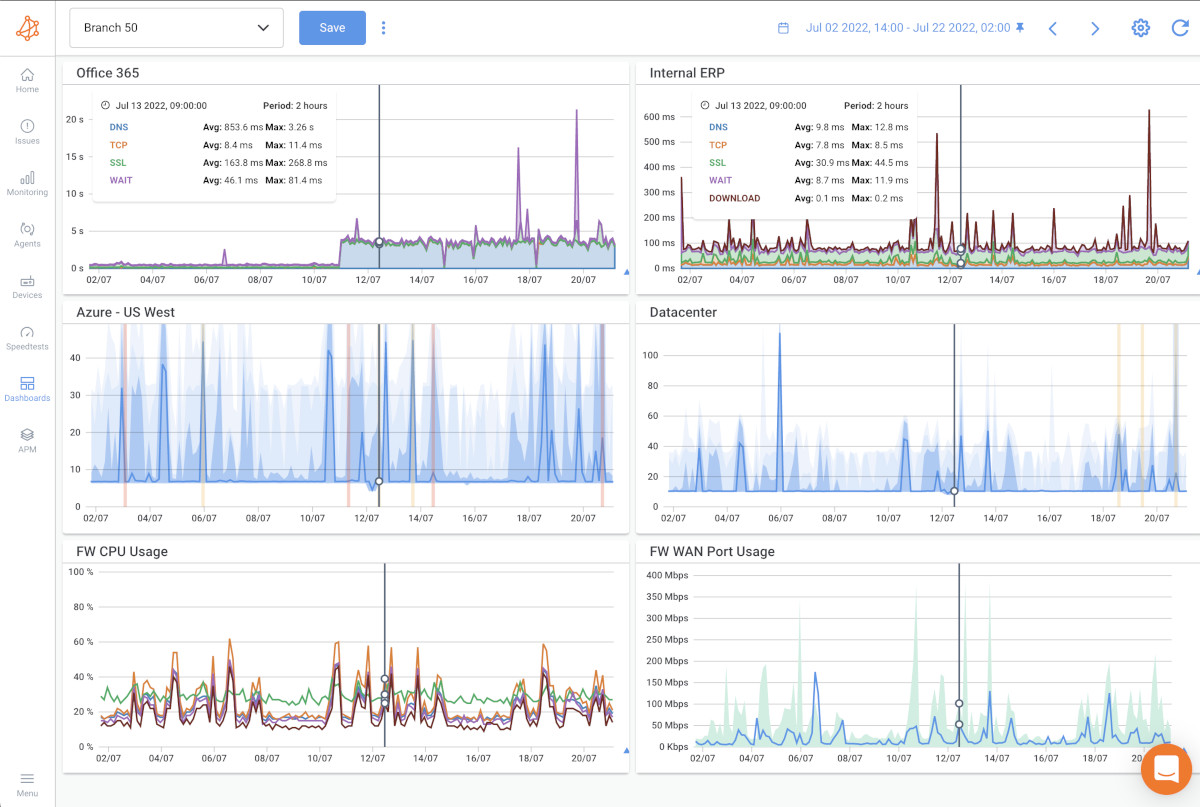

Misconfigured DNS settings on devices can prevent proper DNS resolution. Diagnostics for this issue involve:
- Device DNS Configuration Review: Examining the DNS configuration on network devices to ensure they are correctly configured and pointing to valid DNS servers. Verify that the primary and secondary DNS server addresses are accurate.
- DNS Forwarders and Recursive Queries: Checking the configuration of DNS forwarders and recursive query settings to ensure they are properly set up to handle DNS resolution requests.
Issues with DNS records, such as incorrect or missing records, can lead to resolution problems. Diagnostics for this issue include:
- DNS Record Validation: Verifying the correctness and consistency of DNS records, including A (IPv4 address), AAAA (IPv6 address), CNAME (canonical name), MX (mail exchange), and TXT (text) records. Ensure that the DNS records accurately reflect the intended IP addresses or domain mappings.
- Reverse DNS Lookup: Performing reverse DNS lookups to ensure that PTR (pointer) records, used for IP-to-domain mapping, are correctly configured for reverse DNS resolution.
DNS hijacking or spoofing involves unauthorized modifications to DNS settings, redirecting users to malicious or unauthorized destinations. Diagnostics for this issue include:
- DNS Security Analysis: Implementing DNS security measures, such as DNSSEC (DNS Security Extensions), to prevent DNS hijacking and ensure the authenticity and integrity of DNS responses.
- Malware Scans: Conducting regular malware scans on network devices to detect and remove any malicious software that may be tampering with DNS settings.
DNS timeouts and latency occur when DNS queries take longer than usual to receive responses or result in timeouts. Diagnostics for this issue involve:
- DNS Query Analysis: Analyzing DNS query logs or using DNS query analysis tools to identify patterns of timeouts or excessive latency. This helps identify potential bottlenecks or network connectivity issues affecting DNS resolution.
- Network Latency Measurement: Measuring network latency between devices and DNS servers using tools like ping or specialized latency measurement tools. Identifying high latency links or network segments can help optimize DNS resolution performance.
Firewall or security configuration issues refer to misconfigurations or incorrect settings in firewall devices or security policies that can unintentionally block or restrict network traffic, leading to connectivity problems. Diagnosing and resolving firewall or security configuration issues is vital to ensure a secure and properly functioning network environment. Diagnostics for this issue include:
- Firewall Rule Analysis: Reviewing firewall rules and policies ensures they are correctly configured and not blocking legitimate network traffic. Analyzing firewall logs helps identify any rules that may be causing connectivity issues.
- Intrusion Detection/Prevention System (IDS/IPS) Logs: Analyzing IDS/IPS logs
Firewall rules define which network traffic is allowed or denied based on specified criteria. Misconfigured or conflicting firewall rules can cause connectivity problems. Diagnostics for this issue involve:
- Firewall Rule Review: Analyzing firewall rules to ensure they are correctly configured, and there are no conflicting rules or rule precedence issues. Check if rules are targeting the correct source and destination addresses, ports, and protocols.
- Rule Logging and Analysis: Enabling firewall rule logging and analyzing the logs to identify any denied traffic or rules that are frequently triggered. This helps uncover potential misconfigurations or rule conflicts.
Access Control Lists (ACLs) are security filters that control traffic flow within a network or between networks. Misconfigured ACLs can inadvertently block or restrict network traffic. Diagnostics for this issue include:
- ACL Configuration Analysis: Reviewing ACL configurations on network devices, such as routers or switches, to ensure they are properly defined and allow necessary traffic. Check for any overly restrictive or erroneous ACL entries.
- Traffic Matching and Counters: Examining ACL counters or traffic matching statistics to identify any ACL rules that are denying or restricting desired traffic. This helps identify ACL rules that require modification or removal.
IPS and IDS systems detect and prevent or alert against potential network intrusions or malicious activities. Misconfigured IPS or IDS policies can block legitimate traffic or generate false positives. Diagnostics for this issue involve:
- IPS/IDS Policy Review: Analyzing IPS/IDS policies to ensure they are properly configured and not overly aggressive in blocking traffic. Fine-tuning the policies based on known network applications and vulnerabilities can minimize false positives and unintended traffic blocks.
- Event Log Analysis: Reviewing IPS/IDS event logs to identify any blocked or flagged traffic that may indicate misconfigurations. Analyze the event details and adjust policies accordingly to allow legitimate traffic.
DoS attacks aim to overwhelm network resources, causing service disruptions. Overly strict DoS protection settings can mistakenly block legitimate traffic. Diagnostics for this issue include:
- DoS Protection Configuration Examination: Reviewing DoS protection settings on network devices or security appliances to ensure they are appropriately configured. Adjust thresholds, rate limits, or whitelist trusted sources to avoid blocking legitimate traffic.
- Traffic Analysis: Analyzing network traffic patterns during normal operation to identify any false positives triggered by DoS protection mechanisms. This helps fine-tune the DoS protection settings for accurate detection and mitigation.
Virtual Private Networks (VPNs) establish secure connections over public networks. Misconfigured VPN settings can cause connectivity problems for remote users. Diagnostics for this issue involve:
- VPN Configuration Verification: Reviewing VPN configurations, including tunnel settings, authentication methods, encryption algorithms, and access control policies. Ensure that VPN settings are consistent across both client and server sides.
- VPN Connectivity Testing: Conducting VPN connectivity tests from different client locations to verify if remote users can establish secure connections and access network resources. This helps identify any configuration issues that may hinder VPN functionality.
Welcome to the toolbox of network superheroes! When it comes to network diagnostics, having the right set of tools and techniques can make you feel like a caped crusader, swiftly identifying and resolving network issues. Tools and techniques for network diagnostics play a crucial role in identifying and resolving network issues efficiently. These tools and techniques provide valuable insights into network performance, connectivity, and potential bottlenecks.
Here are some of the most commonly used network diagnostics tools and techniques:
Ping is like a friendly handshake between your device and another device or server on the network. It sends out ICMP (Internet Control Message Protocol) echo requests and waits for a response, allowing you to measure the round-trip time (RTT) it takes for the packets to reach the destination and return.
- Connectivity Testing: Ping helps determine if a device or server is reachable and responsive. By sending a ping request to a specific IP address or hostname, you can verify network connectivity and detect any connection issues.
- Latency Measurement: Ping measures the time it takes for packets to travel to the destination and return. It provides insights into network latency, allowing you to identify potential performance bottlenecks and troubleshoot latency-related problems.
Traceroute is like a detective on the network, tracing the path that packets take from your device to a destination. It helps you identify each hop (router or network node) along the route and measure the time it takes to reach each hop.
- Routing Analysis: Traceroute uncovers the path packets take, revealing the routers and network segments they traverse. By analyzing the traceroute results, you can pinpoint specific hops where latency or packet loss occurs, enabling you to troubleshoot routing issues effectively.
- Network Topology Mapping: Traceroute assists in mapping the network topology by showing the sequence of routers or devices in the packet's path. This helps network administrators gain a better understanding of how traffic flows through the network and aids in network optimization.
Some Network Monitoring tools, like Obkio, have their own Traceroute featured integrated in their NPM tools, for a more end-to-end network monitoring and troubleshooting solution. Obkio even has Obkio Vision, a free advanced Visual Traceroute tool that can be used on its own, or as part of Obkio's tool!
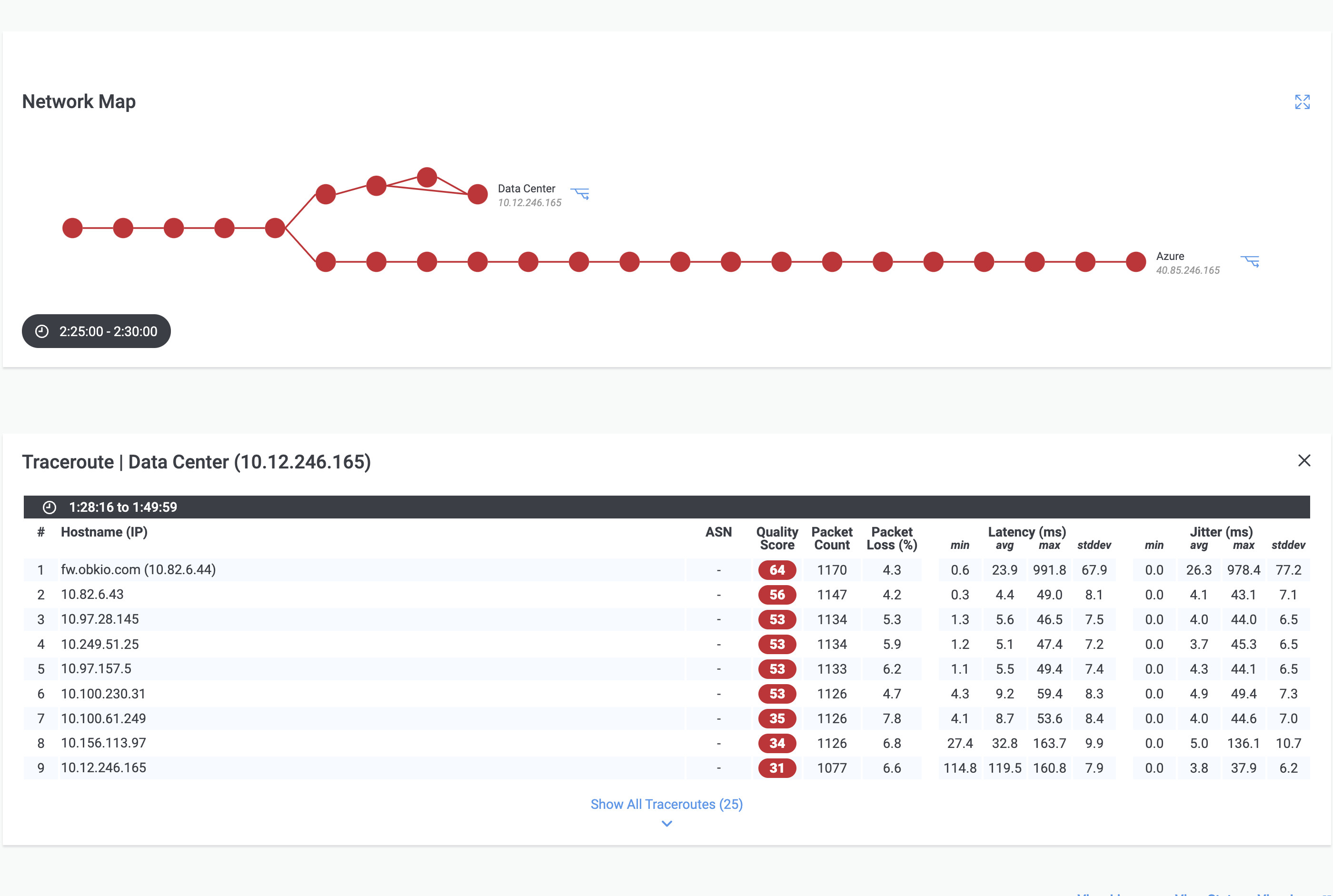

Together, Ping and Traceroute provide valuable information for network diagnostics. They help you identify connectivity problems, measure network latency, troubleshoot routing issues, and gain insights into the network's behavior. Armed with these tools, you can don your network detective hat and unravel the mysteries that may be affecting your network performance.
We've already about Network Monitoring tools in this article - and showed you how to perform a network diagnostic using Obkio's tool. That's because Network Monitoring tools are the most complete way to actual understand and troubleshoot network performance.
Network monitoring tools provide real-time visibility into network performance, traffic patterns, and device health. These tools collect and analyze data from network devices, enabling proactive monitoring and issue detection.
Synthetic monitoring involves simulating user interactions or network traffic patterns to proactively measure network performance. It uses artificial transactions or test scenarios to mimic real-user activities and assess network responsiveness.
- Performance Testing: Synthetic monitoring tools generate synthetic traffic, typically from remote locations, to measure network latency, response times, and overall performance. By continuously monitoring key network metrics, such as round-trip time (RTT) or DNS resolution time, administrators can identify performance degradation and troubleshoot accordingly.
- Service Availability Monitoring: Synthetic monitoring can validate service availability by periodically checking if critical applications or network services are accessible and responding within acceptable timeframes. This helps ensure that essential services are available for end-users and aids in early detection of service disruptions.
- SLA Compliance: Synthetic monitoring allows administrators to measure network performance against Service Level Agreements (SLAs). By monitoring network metrics, such as uptime, network response time, or packet loss, organizations can assess whether service providers meet the agreed-upon performance standards for service or Internet SLAs.
- Distributed Performance Analysis: Synthetic monitoring tools often include a network of monitoring endpoints distributed across various geographic locations. This enables administrators to measure network performance from different regions, identify regional disparities, and optimize network routing and content delivery.


Simple Network Management Protocol (SNMP) is a widely used protocol for network monitoring and management. SNMP-based monitoring tools retrieve and analyze data from SNMP-enabled devices, such as routers, switches, and servers.
- Device Health Monitoring: SNMP-based tools collect information about device status, including CPU usage, memory utilization, interface statistics, and error rates. By monitoring these metrics, administrators can identify potential device issues or performance bottlenecks.
- Bandwidth Utilization Analysis: Network monitoring tools utilizing SNMP can track and measure bandwidth usage on network interfaces. This helps identify congested links, bandwidth-hungry applications, and potential bandwidth allocation problems.
Packet capture tools capture and inspect network traffic packets, allowing administrators to analyze network behavior at a granular level. These tools are particularly useful for troubleshooting complex issues and analyzing protocol-level problems.
- Deep Packet Inspection: Packet capture tools, such as Wireshark, enable in-depth analysis of packet-level details. Administrators can examine packet headers, payloads, and protocol interactions to identify anomalies, diagnose network issues, and troubleshoot protocol-related problems.
- Real-Time Analysis: Some packet capture tools provide real-time analysis capabilities, allowing administrators to monitor traffic patterns and detect abnormalities as they occur. This enables proactive network diagnostics and faster issue resolution.
Network monitoring tools often include alerting mechanisms that notify administrators about critical events or anomalies in real-time. Alerts can be configured based on specific thresholds, performance degradation, or predefined conditions.
- Proactive Issue Detection: Alerts and notifications ensure that administrators are promptly informed about network problems, such as device failures, high bandwidth utilization, or unusual network behavior. This allows for proactive troubleshooting and minimizes network downtime.
- Customizable Alerting: Network monitoring tools typically offer flexibility in setting up customized alerts based on specific network requirements. Administrators can define threshold levels, specify notification channels (email, SMS, etc.), and tailor alerts to their organization's needs.
Get ready to unleash the superhero within you as we dive into the realm of best practices for network diagnostics! Just like a caped crusader armed with knowledge and skills, these best practices will empower you to conquer network issues with finesse and save the day.
When it comes to network diagnostics, following best practices is essential to ensure accurate and efficient troubleshooting. Here are five key best practices to consider for effective network diagnostics:
Maintain up-to-date documentation of your network infrastructure, including network diagrams, device configurations, IP addressing schemes, and VLANs. This documentation provides a clear understanding of your network layout, making it easier to identify potential bottlenecks or misconfigurations during diagnostics.
Establish a baseline for normal network performance by monitoring key metrics like latency, bandwidth utilization, packet loss, and error rates during periods of normal operation. Regularly monitor these metrics to detect any deviations or anomalies that could indicate network issues. Performance monitoring helps identify patterns, trends, and areas for improvement.
Enable logging on network devices and systems to capture relevant events, errors, and warnings. Regularly review and analyze logs to identify patterns or recurring issues. Logging analysis can provide crucial insights into network behavior, security threats, and performance problems.
Network diagnostics often require collaboration among different teams, such as network administrators, system administrators, and application developers. Encourage effective communication, knowledge sharing, and cross-team collaboration to quickly identify the root cause of issues and implement appropriate solutions.
Leverage a combination of network diagnostic tools and techniques to efficiently troubleshoot issues. This includes tools like ping, traceroute, packet capture, and network analyzers. Familiarize yourself with these tools and their capabilities to effectively isolate and resolve network problems.
By following these best practices, you can streamline your network diagnostics process, minimize downtime, and enhance overall network performance. Remember, network diagnostics is a combination of technical expertise, proactive monitoring, effective communication, and leveraging the right tools to uncover and resolve network issues efficiently.
Explore essential network monitoring best practices for network admins, from choosing the right tools to troubleshooting internal and external issues.
Learn more

Welcome to the captivating world of real-world network diagnostics in action, where businesses triumph over network challenges with ingenious solutions! In this section, we'll explore compelling case studies that demonstrate the immense value of network diagnostics in the business realm.
Real-world case studies provide valuable insights into how network diagnostics techniques and tools are applied to solve actual network issues. Let's delve into a few examples that highlight the power of network diagnostics in action:
A large multinational company was experiencing frequent dropped connections, severely impacting their productivity. Network administrators utilized network monitoring tools to identify the problem. Through real-time monitoring, they observed intermittent spikes in latency and packet loss during peak usage hours. By conducting packet captures and analyzing the traffic, they discovered a misconfigured network switch causing congestion. The issue was promptly rectified, restoring smooth network connectivity and eliminating the dropped connections.
A small startup noticed sluggish network performance, leading to delays in critical business operations. Using network monitoring tools, they identified excessive bandwidth utilization on specific network segments. Digging deeper, they performed deep packet inspections and discovered a rogue application consuming a significant portion of available bandwidth. By isolating and addressing the application, network performance improved, and the startup regained the speed needed for efficient operations.
A university's network was plagued by mysterious latency issues affecting online learning and research activities. Network administrators implemented synthetic monitoring techniques, simulating traffic patterns and measuring performance from various locations. Through these tests, they uncovered a faulty network link between two buildings causing excessive latency. With this knowledge, they reconfigured the network routing, resolved the latency issue, and ensured smooth communication across the campus network.
These real-world case studies exemplify the effectiveness of network diagnostics in resolving diverse network challenges. By leveraging monitoring tools, conducting packet captures, analyzing traffic patterns, and implementing synthetic monitoring, network administrators can uncover the root causes of issues, make informed decisions, and implement targeted solutions.
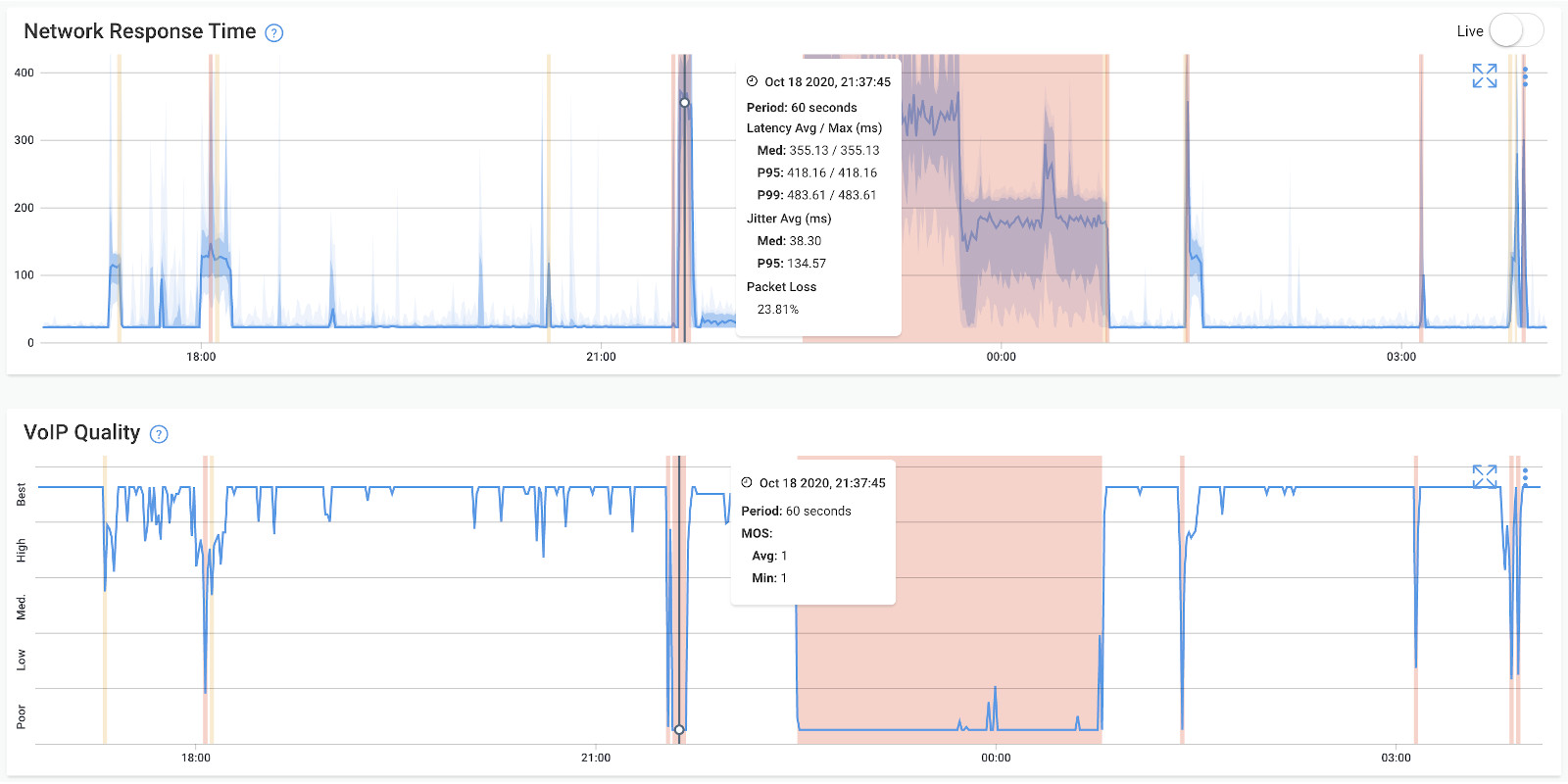
These stories demonstrate that network diagnostics is not merely a theoretical concept but a practical and indispensable tool for maintaining robust and efficient networks. By applying diagnostic techniques to real-world scenarios, organizations can overcome network obstacles, enhance performance, and ensure a seamless network experience for their users.
As technology continues to evolve at a rapid pace, the field of network diagnostics is no exception. In this section, let's go over the exciting future trends and emerging technologies that promise to revolutionize network diagnostics:
AI and ML are poised to play a significant role in network diagnostics. These technologies can analyze vast amounts of network data, detect patterns, and predict potential issues. AI-powered diagnostics can automatically identify anomalies, proactively alert administrators, and even suggest remedial actions. ML algorithms can continuously learn from network behavior, enabling more accurate performance baselining and anomaly detection.
SDN introduces a programmable and centralized approach to network management. With SDN, network administrators can dynamically configure and optimize network resources, monitor traffic flows, and implement real-time diagnostics. SDN enables granular control over network paths, traffic prioritization, and load balancing, enhancing network diagnostics capabilities and enabling rapid troubleshooting.
IBN leverages AI and automation to align network operations with business intent. With IBN, administrators define high-level business policies, and the network infrastructure autonomously configures itself to fulfill those requirements. This approach simplifies network diagnostics by providing a holistic view of network intent, enabling administrators to monitor network behavior against desired outcomes and quickly identify any deviations.
Network telemetry involves collecting and analyzing real-time data from network devices, allowing administrators to gain deeper insights into network performance. By leveraging streaming analytics, administrators can monitor key metrics, detect anomalies, and extract actionable intelligence from large volumes of streaming network data. This enables more proactive and precise network diagnostics.
Advanced network visualization techniques provide intuitive graphical representations of network topologies, traffic flows, and performance metrics. Network administrators can quickly identify bottlenecks, anomalies, and potential issues through interactive and visually rich interfaces. These visualizations enhance the efficiency and effectiveness of network diagnostics, allowing administrators to make informed decisions.
These future trends and emerging technologies hold immense promise for the field of network diagnostics. By leveraging AI, ML, SDN, IBN, telemetry, streaming analytics, and advanced visualization techniques, organizations can expect more intelligent, proactive, and efficient network diagnostics, leading to enhanced performance, improved user experiences, and reduced downtime. The future of network diagnostics is bright, and businesses that embrace these trends will stay ahead of the curve in the ever-evolving digital landscape.


You've made it! You now know why and how to perform network diagnositcs and you're almost ready to on your merry way. Except for one last thing you need to remember - proactivity leads to productivity.
In the world of network management, proactive diagnostics have become increasingly vital. Rather than waiting for issues to occur and reactive troubleshooting, proactive network diagnostics involve a preemptive approach to identify and address potential problems before they impact network performance. Here's a closer look at the importance of proactive network diagnostics:
Proactive network diagnostics help minimize downtime and service disruptions by identifying and resolving issues before they escalate. By continuously monitoring network health, performance metrics, and traffic patterns using Proactive Network Monitoring, administrators can detect early warning signs of potential problems, allowing them to take proactive measures to prevent service interruptions. This approach ensures smoother network operations and enhanced reliability.
Proactive diagnostics play a crucial role in optimizing network performance and ensuring a positive user experience. By monitoring key network metrics, such as latency, packet loss, and bandwidth utilization, administrators can identify performance bottlenecks and address them promptly. Proactive measures, such as traffic optimization, load balancing, and capacity planning, can be implemented to optimize network resources and maintain optimal performance levels.
Proactive network diagnostics can help identify and mitigate security threats in a timely manner. By analyzing network traffic patterns and employing advanced threat detection techniques, administrators can identify suspicious behavior, malware infections, or potential data breaches. Early detection allows for swift response and mitigation measures to safeguard network assets and protect sensitive information.
Proactive diagnostics enable organizations to optimize their IT resources and reduce costs. By identifying potential network issues in advance, administrators can allocate resources more efficiently, plan for capacity upgrades, and prioritize investments where they are most needed. Proactive network diagnostics can help prevent costly emergency fixes, minimize unnecessary equipment replacements, and optimize network infrastructure utilization.
Proactive network diagnostics provide valuable insights and data-driven information that can inform strategic decision-making and planning. By monitoring and analyzing network performance trends, administrators can identify patterns, predict future needs, and make informed decisions about network upgrades, technology investments, and infrastructure optimization. This proactive approach ensures that the network is aligned with the organization's objectives and can adapt to evolving business requirements.
In summary, proactive network diagnostics empower organizations to stay ahead of potential issues, optimize network performance, enhance security, and make informed decisions. By taking a proactive stance, businesses can minimize downtime, improve user experiences, optimize resource utilization, and ultimately achieve a more efficient and resilient network infrastructure.

Congratulations, network superheroes, you have reached the end of our epic journey through the realm of network diagnostics! Armed with knowledge, tools, and a dash of fun, you are now equipped to tackle network issues like true champions. But before we bid farewell, let's remember the extraordinary power of Obkio, the ultimate sidekick in your network diagnostic adventures.
With Obkio by your side, you can harness real-time insights, pinpoint network issues with precision, and swoop in to save the day. Whether it's identifying connectivity woes, battling sluggish performance, or conquering intermittent outages, Obkio's supercharged network monitoring capabilities will be your secret weapon.
Put It to the Test: Trying Is the Ultimate Way to Learn!
So, don't let network mysteries leave you scratching your head. Unleash the power of Obkio and embark on a journey of uninterrupted connectivity, optimized performance, and unrivaled network efficiency.
- 14-day free trial of all premium features
- Deploy in just 10 minutes
- Monitor performance in all key network locations
- Measure real-time network metrics
- Identify and troubleshoot live network problems



























 Obkio Blog
Obkio Blog



